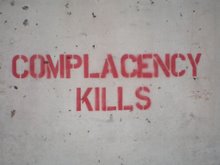MUSAYYIB, Iraq - Air Force Staff Sgt. Justin Cremer listened carefully as Army Capt. Irvin Oliver described the upcoming mission. They'd raid a compound of houses the next morning; a map was sketched on the ground in chalk lines of yellow, blue and white.
Oliver looked at the soldiers bunched around him and reminded them that aerial photographs had showed at least 17 people in the compound the night before, and that they were looking for just one - an insurgent cell leader suspected of orchestrating roadside bombs that'd killed American soldiers.
Be careful, Oliver told his men, not to get shot. And be careful, the company commander said, not to shoot any unarmed civilians.
Despite those warnings, last Thursday's mission would serve as a reminder that counterinsurgency is among the most complex forms of warfare, and sometimes the wrong people are killed. [snip]
As they got closer to Musayyib, a small group of Humvees, including Cremer's, peeled off and rode into town. They were going to pick up a truckload of Iraqi police who hadn't been told about the operation in advance because of fears of insurgent sympathizers in the police force.
Insurgents have left their mark in the town: A suicide bomber blew himself up next to a fuel tanker last July, killing almost 100 people in a shower of fire and shrapnel.
Less than five minutes after arriving at the police station, Cremer got a call on his radio: "Be advised, the lights just went off in that area."
The pilot, watching the insurgent leader's compound, had seen every light in the group of houses get turned off.
Cremer shook his head. "These (expletive) - someone made a phone call," he said, motioning toward the police station.
The convoy left, a pickup truck of police now with it.
KR Washington Bureau | 06/05/2006 | For U.S. troops, it's hard to know who is friend and who is foe





No comments:
Post a Comment